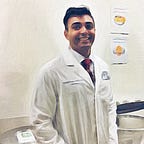What We Can Learn from Past Covid19 Outbreaks
We are headed for a third surge, but this time, we know more
As we are headed toward a third Covid-19 surge in the United States, we are better prepared now than we were before, if for no reason other than our collective experiences with the virus.
Among these, the CDC’s Journal of Emerging Infectious Diseases recently published a Covid-19 super-spreading outbreak that occurred at a bar in Vietnam. This report describes a St. Patrick’s day party in which one guest infected 12 others at a poorly ventilated, crowded venue. Genome sequencing helped to confirm that the viral transmission indeed happened during the event.
The researchers noted that asymptomatic secondary spread occurred among people who were not at the bar as well. Once again, we are reminded: indoor, crowded, poorly ventilated spaces without masks are dangerous. These types of cluster spreading events are propagating this epidemic.
And while this outbreak happened at a bar, we have seen the same happen in many other settings as well.
A few key outbreaks to note that can help us be better prepared for the next Covid-19 surge:
A recent CDC report revealed a Covid19 outbreak at an indoor hockey game. Masks were not used during game-play, and were also not used in locker rooms; the index case became symptomatic the day after the game, and infected players on both teams.
Additionally, we have the significant outbreak at an indoor call center in South Korea from earlier in the epidemic. This has implications for crowded indoor workplaces.
And then there’s this outbreak from an indoor restaurant in China associated possibly with an air conditioning unit and poor air exchange. Indoor dining is often high risk because of close face to face contact without masks..
In terms of travel, there’s this investigation published in JAMA on viral spread throughout a bus, well beyond six feet of distance from the index case (suggesting contribution from aerosols).
We have also seen a number of reports of transmission on airplanes as well; most if not all were in the era before masks. I have yet to see any large or small plane outbreak since universal masking was introduced on flights.
In the U.S., we had a notable outbreak at summer camps in Georgia. Here too there was limited mask use; and there was singing, cheering, crowding, and also asymptomatic spread.
Adding to the singing indoors thread, there was the infamous choir outbreak from Washington state in which 53 cases were identified out of 61 people who attended; 3 were hospitalized and 2 died.
And in South Korea, we saw Covid-19 outbreaks associated with high-intensity fitness and dance classes; we have seen others since then as well, such as this more recent Covid-19 outbreak in a spin class in Hamilton, Canada in which masks were not used during the session.
One outbreak that is particularly unfortunate is from a wedding in the country of Jordan early in the pandemic, in which the father of the bride was the index case. He had greeted most guests at the door; and propagated a super-spreading wedding as a result. Similarly we saw another more recent wedding outbreak from Maine, which led to subsequent outbreaks throughout the state, including in a jail. Again — indoors, no masks, dancing, singing — you get the drill.
And we all remember Covid-19 spread on ships and cruises, which were noted from the very start. In this CDC investigation of the Yokohama ship, attack rates highest in the more crowded cabins, and again there was asymptomatic spread — the patterns repeat themselves.
Also important to note are religious gatherings. In the U.S., we have seen Covid-19 outbreaks at churches, where singing, socializing, and eating together propagated spread. This was predictable, and we didn’t stop it.
We had an outbreak in Boston over the summer at a hospital in which the break room was the location of spread, and where masks were removed to eat and rest. Transmission can and will happen when we least expect it.
And then more recently this fall there’s been multiple outbreaks across hospitals in Massachusetts, many linked to crowded working conditions that make it nearly impossible to physically distance, as well as a lack of regular testing for staff and asymptomatic spread. I would know, as I work at one of these hospitals.
This is all to say that there are very clear take-aways from all that we do know, and we know so much more now than we did in March or April. We are clearly headed into a third surge of Covid-19 in the United States, and we need to employ the lessons of the past.
This is what we can learn from these past outbreaks:
- Close/prolonged indoor contact is high risk, especially in areas with poor ventilation
- Singing/dancing/high intensity exercise or activity will likely lead to more droplets and aerosols being emitted and more inhalation, which means more spread of disease
- Asymptomatic spread is very real
- MASKS WORK!
This virus has many weak points. It spreads largely through clusters in which few people infect many people and many people don’t necessarily infect any people. So if we can stop large outbreaks, we can drive transmission down. This is a key part of Covid-19 control. We must act urgently.
(This is pulled and lightly edited from my Oct. 19 Twitter thread)
